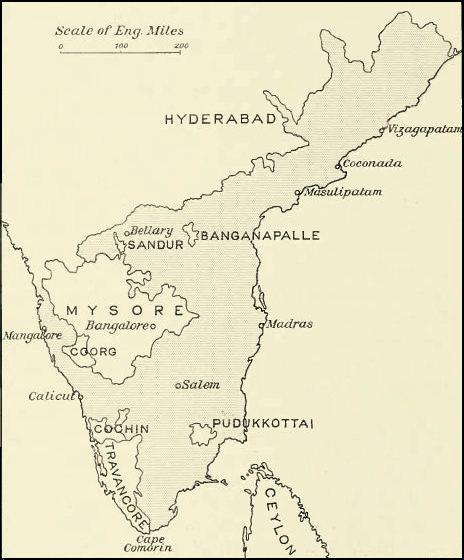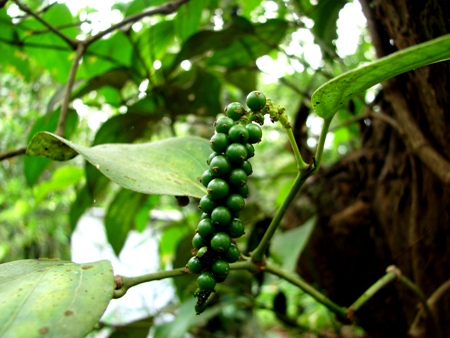|
Thampan
Thampan is a title historically associated with the Kshatriya class in Kerala, India. It was used by certain noble families,Samantha communities, who held warrior and administrative roles under the local rulers. These families were traditionally involved in governance, military service, and landownership in Kerala’s feudal society. Etymology The word Thampan/Thampanot/Thampran is a contraction of the term Thampuran. This word “thamburan” is a Malayalam word derived from an ancient Tamil word “thambirAn-தம்பிரான்”. Tham + pirAn = தம் + பிரான். “Tham- தம்” is used in the sense of “ours”, “our own”, e.g. "tham+enthai=thanthai/father", "tham+akkai=thamakkai/sister" "tham+iyyan=thamayyan/brother". “pirAn-பிரான்”-means “God or Lord”. Tham + pirAn = தம் + பிரான். Tamil people use the terms “RAmapirAn-இராமபிரான்” to mean the Lord RAM, “KaNNapirAn-கண்ணப� ... [...More Info...] [...Related Items...] OR: [Wikipedia] [Google] [Baidu] |
Raja
Raja (; from , IAST ') is a noble or royal Sanskrit title historically used by some Indian subcontinent, Indian rulers and monarchs and highest-ranking nobles. The title was historically used in the Indian subcontinent and Southeast Asia. The title has a long history in South Asia and History of Southeast Asia, Southeast Asia, being attested from the ''Rigveda'', where a ' is a Rigvedic tribes, ruler, see for example the Battle of the Ten Kings, ', the "Battle of Ten Kings". The title has equivalent cognates in other Indo-European languages, notably the Latin Rex (title), Rex and the Celtic languages, Celtic Rix. Raja-ruled Indian states While most of the British Raj, Indian salute states (those granted a Salute#Heavy arms: gun salutes, gun salute by the The Crown, British Crown) were ruled by a Maharaja (or variation; some promoted from an earlier Raja- or equivalent style), even exclusively from 13 guns up, a number had Rajas: ; Hereditary salutes of 11-guns : * the R ... [...More Info...] [...Related Items...] OR: [Wikipedia] [Google] [Baidu] |
North Malabar
North Malabar refers to the geographic area of southwest India covering the state of Kerala State, Kerala's present day Kasaragod district, Kasaragod and Kannur district, Kannur districts, Mananthavady taluk of the Wayanad District, Wayanad district, the taluks of Vatakara and Koyilandy in the Kozhikode District, Kozhikode district, and the entire Mahe district of the Puducherry (union territory), Puducherry UT. The Korapuzha, Korapuzha River or Elanthur River in north Kozhikode serves as the border separating North and South Malabar. Manjeshwaram taluk, Manjeswaram marks the northern border between North Malabar and Dakshina Kannada. The North Malabar region is bounded by Dakshina Kannada (Mangalore) to north, the hilly regions of Kodagu and Mysore Plateau to east, South Malabar (Korapuzha) to south, and Arabian Sea to west. The greater part of North Malabar (except Mahé) remained as one of the two administrative divisions of the Malabar District (an administrative district of ... [...More Info...] [...Related Items...] OR: [Wikipedia] [Google] [Baidu] |
17th Century
The 17th century lasted from January 1, 1601 (represented by the Roman numerals MDCI), to December 31, 1700 (MDCC). It falls into the early modern period of Europe and in that continent (whose impact on the world was increasing) was characterized by the Baroque cultural movement, the latter part of the Spanish Golden Age, the Dutch Golden Age, the French ''Grand Siècle'' dominated by Louis XIV, the Scientific Revolution, the world's first public company and megacorporation known as the Dutch East India Company, and according to some historians, the General Crisis. From the mid-17th century, European politics were increasingly dominated by the Kingdom of France of Louis XIV, where royal power was solidified domestically in the civil war of the Fronde. The semi-feudal territorial French nobility was weakened and subjugated to the power of an absolute monarchy through the reinvention of the Palace of Versailles from a hunting lodge to a gilded prison, in which a greatly expanded ro ... [...More Info...] [...Related Items...] OR: [Wikipedia] [Google] [Baidu] |
Travancore
The kingdom of Travancore (), also known as the kingdom of Thiruvithamkoor () or later as Travancore State, was a kingdom that lasted from until 1949. It was ruled by the Travancore Royal Family from Padmanabhapuram, and later Thiruvananthapuram. At its zenith, the kingdom covered most of the south of modern-day Kerala ( Idukki, Kottayam, Alappuzha, Pathanamthitta, Kollam, and Thiruvananthapuram districts, major portions of Ernakulam district, Puthenchira village of Thrissur district) and the southernmost part of modern-day Tamil Nadu ( Kanyakumari district and some parts of Tenkasi district) with the Thachudaya Kaimal's enclave of Irinjalakuda Koodalmanikyam temple in the neighbouring kingdom of Cochin. However Tangasseri area of Kollam city and Anchuthengu near Attingal in Thiruvananthapuram were parts of British India. Malabar District of Madras Presidency was to the north, the Madurai and Tirunelveli districts of Pandya Nadu region in Madras Presidency ... [...More Info...] [...Related Items...] OR: [Wikipedia] [Google] [Baidu] |
Kingdom Of Cochin
The kingdom of Cochin or the Cochin State, named after its capital in the city of Kochi (Cochin), was a kingdom in the central part of present-day Kerala state. It originated in the early part of the 12th century and continued to rule until its accession to the Dominion of India in 1949. The kingdom of Cochin, originally known as Perumpadappu Swarupam, was under the rule of the Kulasekhara dynasty (Second Cheras), Later Cheras in the Medieval India, Middle Ages. After the fall of the Kulasekhara dynasty (Second Cheras), Mahodayapuram Cheras in the 12th century, along with numerous other provinces Perumpadappu Swarupam became a free political entity. However, it was only after the arrival of Portuguese on the Malabar Coast that the Perumpadappu Swarupam acquires any political importance. Perumpadappu rulers had family relationships with the Nambudiri rulers of Edappally. After the transfer of Kochi and Vypin from the Edappally rulers to the Perumpadappu rulers, the latter came ... [...More Info...] [...Related Items...] OR: [Wikipedia] [Google] [Baidu] |
Zamorin
The Samoothiri (Anglicised as Zamorin; Malayalam: , , Arabic: ''Sāmuri'', Portuguese: ''Samorim'', Dutch: ''Samorijn'', Chinese: ''Shamitihsi''Ma Huan's Ying-yai Sheng-lan: 'The Overall Survey of the Ocean's Shores' 433 Translated and Edited by J. V. G. Mills. Cambridge University Press for the Hakluyt Society (1970).) was the title of the erstwhile ruler and monarch of the Calicut kingdom in the South Malabar region of India. Originating from the former feudal kingdom of Nediyiruppu Swaroopam, the Samoothiris and their vassal kings from Nilambur Kovilakam established Calicut as one of the most important trading ports on the southwest coast of India. At the peak of their reign, they ruled over a region extending from Kozhikode Kollam to the forested borders of Panthalayini Kollam (Koyilandy).Varier, M. R. Raghava. "Documents of Investiture Ceremonies" in K. K. N. Kurup, Edit., "India's Naval Traditions". Northern Book Centre, New Delhi, 1997K. V. Krishna Iyer, ''Zamorin ... [...More Info...] [...Related Items...] OR: [Wikipedia] [Google] [Baidu] |
Social Groups Of Kerala
Social organisms, including human(s), live collectively in interacting populations. This interaction is considered social whether they are aware of it or not, and whether the exchange is voluntary or not. Etymology The word "social" derives from the Latin word ''socii'' ("allies"). It is particularly derived from the Italian ''Socii'' states, historical allies of the Roman Republic (although they rebelled against Rome in the Social War of 91–87 BC). Social theorists In the view of Karl Marx,Morrison, Ken. ''Marx, Durkheim, Weber. Formations of modern social thought'' human beings are intrinsically, necessarily and by definition social beings who, beyond being "gregarious creatures", cannot survive and meet their needs other than through social co-operation and association. Their social characteristics are therefore to a large extent an objectively given fact, stamped on them from birth and affirmed by socialization processes; and, according to Marx, in producing and reproduci ... [...More Info...] [...Related Items...] OR: [Wikipedia] [Google] [Baidu] |
Indian Castes
The caste system in India is the paradigmatic ethnographic instance of social classification based on castes. It has its origins in Outline of ancient India, ancient India, and was transformed by various ruling elites in medieval India, medieval, early-modern, and modern India, especially in the aftermath of the collapse of the Mughal Empire and the establishment of the British Raj. Beginning in ancient India, the caste system was originally centered around ''Varna (Hinduism), varna'', with ''Brahmin, Brahmins'' (priests) and, to a lesser extent, Kshatriya, ''Kshatriyas'' (rulers and warriors) serving as the elite classes, followed by ''Vaishya, Vaishyas'' (traders, merchants, and farmers) and finally ''Shudra, Shudras'' (labourers). Outside of this system are the oppressed, marginalised, and persecuted ''Dalit, Dalits'' (also known as "Untouchability, Untouchables") and ''Adivasi, Adivasis'' (tribals). Over time, the system became increasingly rigid, and the emergence of ''J� ... [...More Info...] [...Related Items...] OR: [Wikipedia] [Google] [Baidu] |
Kerala Society
Kerala ( , ) is a state on the Malabar Coast of India. It was formed on 1 November 1956, following the passage of the States Reorganisation Act, by combining Malayalam-speaking regions of the erstwhile regions of Cochin, Malabar, South Canara, and Travancore. Spread over , Kerala is the 14th smallest Indian state by area. It is bordered by Karnataka to the north and northeast, Tamil Nadu to the east and south, and the Lakshadweep Sea to the west. With 33 million inhabitants as per the 2011 census, Kerala is the 13th-largest Indian state by population. It is divided into 14 districts with the capital being Thiruvananthapuram. Malayalam is the most widely spoken language and is also the official language of the state. The Chera dynasty was the first prominent kingdom based in Kerala. The Ay kingdom in the deep south and the Ezhimala kingdom in the north formed the other kingdoms in the early years of the Common Era (CE). The region had been a prominent spice exporter si ... [...More Info...] [...Related Items...] OR: [Wikipedia] [Google] [Baidu] |





